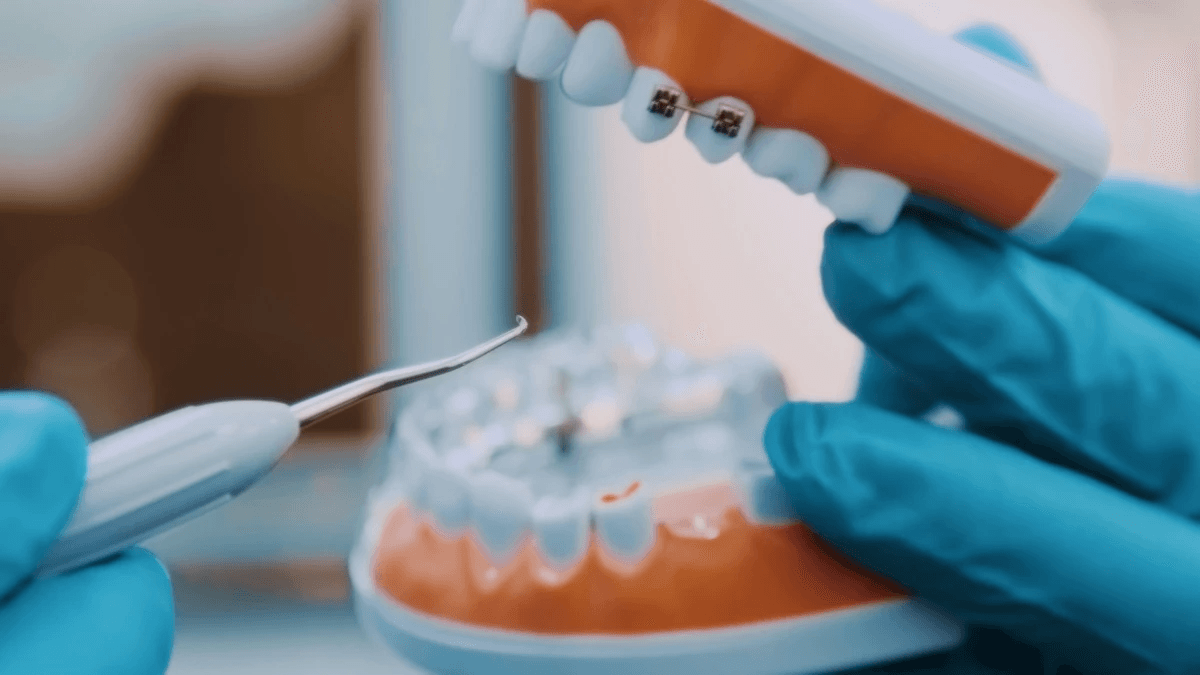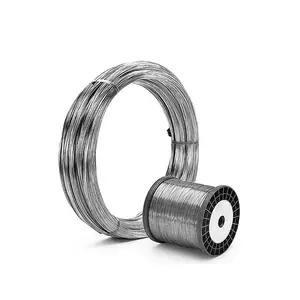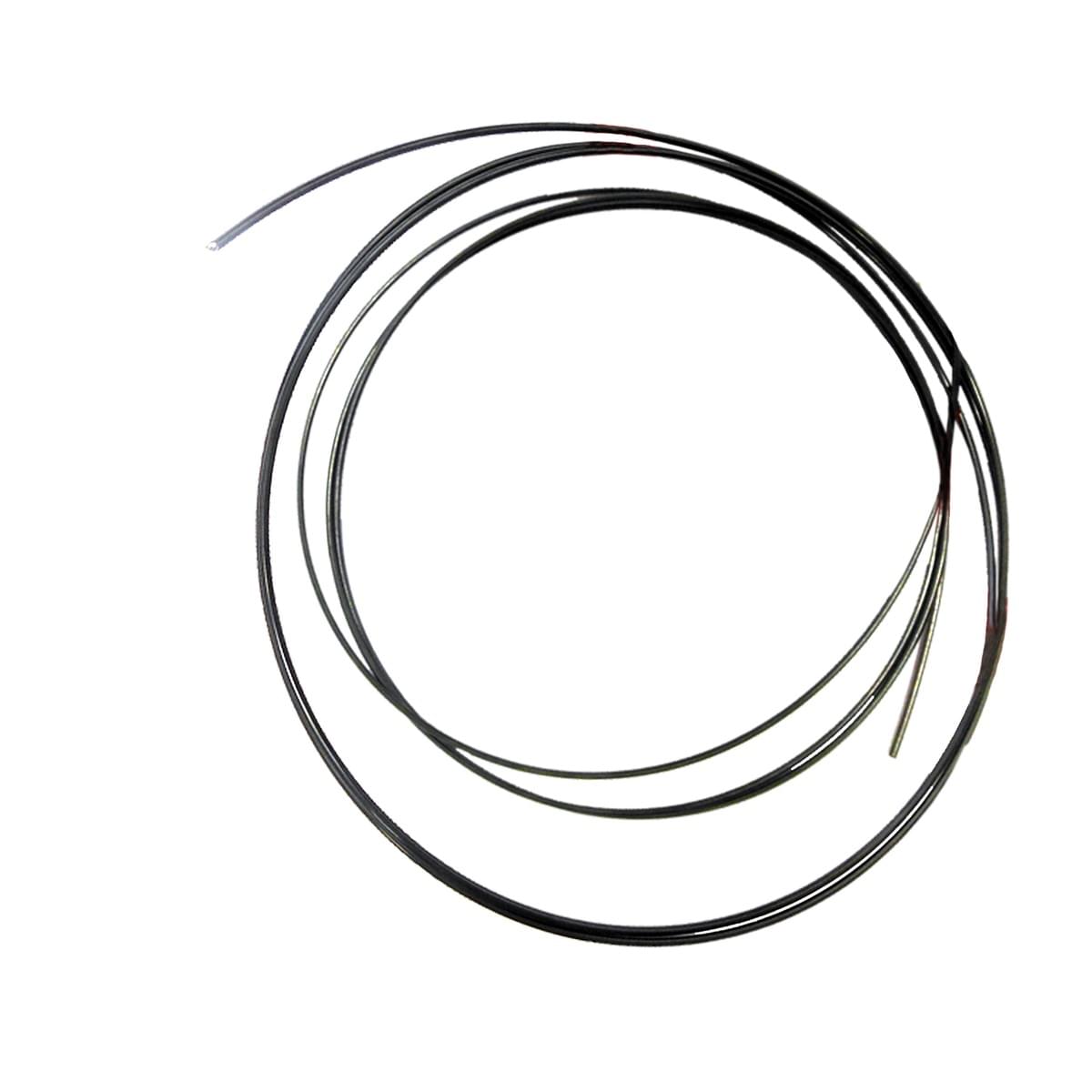Introduction
In the world of orthodontics, the choice of wire can significantly influence treatment outcomes. Among the most commonly used materials are copper NITI and regular NITI wires, each boasting unique properties that cater to different patient needs. Understanding these differences is crucial for orthodontic professionals aiming to provide effective and tailored treatments.
Understanding Copper NITI and Regular NITI
Copper NITI wire is a specialized form of nickel titanium that incorporates copper into its composition, enhancing its performance in various orthodontic applications. Regular NITI wire, on the other hand, is a pure nickel titanium alloy known for its excellent elasticity and shape memory properties. While both types of wires serve similar functions in orthodontics, their distinct compositions lead to varied responses during treatment.
The Importance of Orthodontic Wires
Orthodontic wires are fundamental components in braces that apply gentle pressure to teeth over time, guiding them into proper alignment. The effectiveness of these wires directly impacts the duration and success of orthodontic treatments, making their selection paramount for both practitioners and patients alike. With advancements in materials like copper NITI and nickel titanium wire, orthodontists now have more options than ever to optimize treatment plans.
What Sets Them Apart
What truly sets copper NITI apart from regular NITI is its enhanced flexibility combined with superior strength under heat activation conditions. This means that while both types can effectively move teeth, copper NITI offers additional advantages in complex cases where precise control is necessary. Ultimately, understanding these distinctions helps practitioners choose the right niti arch wire for each patient's unique circumstances.
The Basics of Nickel Titanium Wires

Among these, copper NiTi wire has gained attention for its unique characteristics that enhance orthodontic performance. Let's delve into what makes these materials tick.
Composition of Copper NITI Wire
Copper NiTi wire, often simply referred to as copper NiTi, is a specialized alloy that incorporates both nickel and titanium in addition to a small percentage of copper. This unique blend alters the wire's thermal and mechanical properties, making it particularly advantageous in orthodontics. The inclusion of copper not only enhances flexibility but also improves the heat activation response compared to standard NiTi wire.
Properties of Regular NITI Wire
Regular NiTi wire boasts a remarkable balance between elasticity and strength, which is why it's been a staple in orthodontics for years. This nickel titanium wire can return to its original shape after deformation, making it ideal for moving teeth gently over time. However, while regular NiTi wires are effective in many cases, they may lack the enhanced flexibility found in their copper counterparts.
How They Function in Orthodontics
Both types of NiTi arch wire play crucial roles in tooth movement by exerting gentle forces on the teeth over extended periods. Regular NiTi wires operate effectively at body temperature but can struggle with performance under varying conditions due to their fixed thermal properties. On the other hand, heat-activated NiTi wires like copper NiTi respond dynamically to temperature changes—expanding or contracting as needed—providing more control during treatment and enhancing patient comfort.
Advantages of Copper NITI Wires

These wires not only enhance the overall effectiveness of tooth movement but also provide orthodontists with a reliable tool for various treatment scenarios. The unique properties of copper NITI make it a preferred choice in many complex cases.
Enhanced Flexibility and Strength
One of the most significant advantages of copper NITI wire is its enhanced flexibility and strength compared to regular nickel titanium wires. This superior flexibility allows the wire to adapt better to the contours of each patient's teeth, ensuring more precise movements during treatment. Additionally, the increased strength reduces the likelihood of breakage, making it a durable option in orthodontic applications.
The inherent properties of copper NITI allow it to maintain its form while exerting gentle yet effective forces on teeth, promoting optimal alignment without causing discomfort. With this exceptional combination, orthodontic professionals can achieve desired outcomes more efficiently and comfortably for patients. Ultimately, this means fewer adjustments and shorter treatment times—who wouldn’t want that?
Heat Activation Benefits
Heat activation is another game-changing feature associated with heat activated NITI wires like copper NITI. These wires respond dynamically to temperature changes within the mouth; they become more flexible when warmed by body heat, allowing them to exert lighter forces on teeth during initial alignment phases. This adaptability not only enhances patient comfort but also supports gradual tooth movement.
Moreover, as temperatures fluctuate—like when sipping a warm beverage—the wire can adjust its stiffness accordingly, providing an ongoing influence on dental alignment throughout the day. This responsive nature makes copper NITI particularly effective for patients who may experience varying levels of discomfort or sensitivity during their orthodontic journey. In essence, heat activation offers an innovative approach that significantly improves patient experience.
Superior Performance for Complex Cases
Copper NITI wires shine brightly when tackling complex orthodontic challenges that require specialized attention and precision. Their unique composition allows them to perform exceptionally well in cases involving severe misalignments or multi-dimensional movements where traditional nickel titanium wire might fall short. With enhanced control over tooth positioning and movement dynamics, these wires empower orthodontists to devise tailored strategies for even the most intricate cases.
Success stories abound where patients have experienced transformative results thanks to the use of copper niti arch wire in their treatments—showcasing not just aesthetic improvements but also functional enhancements in bite and jaw alignment as well! By choosing copper NITI over standard options, practitioners can navigate complex scenarios with confidence while delivering high-quality care that prioritizes patient satisfaction above all else.
Disadvantages of Regular NITI Wires

While regular NITI wires have been a staple in orthodontics for years, they are not without their drawbacks. Understanding these limitations is crucial for both orthodontists and patients when considering the best options for treatment. Let’s delve into some of the key disadvantages of nickel titanium wires.
Limited Elasticity
One of the most significant drawbacks of regular NITI wire is its limited elasticity compared to its copper counterpart. This reduced elasticity means that while it can exert a consistent force on teeth, it may not adapt as effectively to varying dental conditions or complex movements. Consequently, orthodontists might find themselves needing to switch to more advanced materials like copper NITI wire to achieve desired results in challenging cases.
Potential for Breakage
Another concern with regular nickel titanium wires is their susceptibility to breakage under certain conditions. While these niti arch wires are generally robust, they can become brittle over time or when exposed to excessive forces during treatment. This potential for breakage not only complicates the treatment process but may also lead to additional visits and costs for patients who require replacements.
Less Effective in Variable Temperatures
Temperature sensitivity is another area where regular NITI wires fall short compared to heat activated niti wires and copper niti options. Nickel titanium wire tends to lose its shape memory properties when subjected to fluctuating temperatures, which can hinder its performance during treatment. In contrast, copper NITI wire maintains better functionality across a range of temperatures, ensuring consistent results regardless of environmental changes.
Real-World Applications

When it comes to orthodontics, the practical applications of copper NITI and regular NITI wires are both fascinating and essential. These innovative materials have transformed how orthodontists approach treatment plans, allowing for tailored solutions that cater to individual patient needs. In this section, we’ll explore the myriad use cases of copper NITI wire, celebrate some success stories with regular NITI wires, and highlight GEE SMA’s pivotal role in advancing nickel titanium technology.
Use Cases of Copper NITI in Orthodontics
Copper NITI wire has become a game-changer in orthodontic treatments due to its unique properties. Its enhanced flexibility allows for more intricate movements without compromising strength, making it ideal for complex cases such as severe crowding or misalignment. Moreover, heat-activated NITI wires can respond dynamically to body temperature changes, providing continuous gentle force that promotes more comfortable adjustments over time.
In addition to their superior performance during treatment, copper NITI wires also help reduce the overall duration of orthodontic care. Patients often experience faster tooth movement while maintaining optimal control over their alignment process. This combination of efficiency and comfort is why many orthodontists are increasingly turning to copper NITI as a go-to option in their practice.
Success Stories with Regular NITI Wires
Despite the advantages of copper NITI wire, regular nickel titanium wires have not lost their place in the orthodontic toolkit. Many practitioners have successfully used standard NITI arch wires for various cases ranging from mild to moderate misalignments. Their reliable elasticity has proven effective at maintaining consistent forces on teeth throughout treatment.
One notable success story involves a teenager who underwent traditional braces therapy using regular nickel titanium wire after experiencing crowding issues during adolescence. The results were impressive—straightened teeth and improved bite alignment achieved within a reasonable timeframe without significant discomfort or complications. Such outcomes underscore the effectiveness of conventional niti wire when applied appropriately.
GEE SMA’s Role in Advancing NITI Technology
GEE SMA has emerged as a leader in advancing nickel titanium technology by developing innovative materials that push the boundaries of what is possible with orthodontic wires. Their commitment to research and development has led to breakthroughs like improved heat activation mechanisms within copper niti products that enhance performance even further under varying conditions.
By investing heavily in quality control and material science, GEE SMA ensures that both copper nitis and regular niti wires meet rigorous standards necessary for successful treatments worldwide. This dedication not only elevates patient care but also inspires confidence among orthodontic professionals who rely on these advanced products daily.
Choosing the Right Wire for Treatment

Selecting the appropriate orthodontic wire is crucial for achieving optimal treatment outcomes. Factors such as the specific dental issues being addressed, patient comfort, and wire properties all play a significant role in this decision-making process. Understanding the differences between copper NITI wire and regular NITI wire can help orthodontists tailor their approach to each individual case.
Factors to Consider in Selection
When choosing between copper NITI and nickel titanium wires, several factors must be considered. The type of malocclusion, desired tooth movement speed, and treatment duration are essential elements that can influence the choice of orthodontic wires. Additionally, characteristics like elasticity and heat activation properties of heat activated NITI wires can significantly impact how effectively they perform in various clinical scenarios.
Orthodontists should also take into account the patient's age, lifestyle, and any specific sensitivities or preferences regarding discomfort during treatment. For instance, younger patients may benefit from more flexible options like copper NITI wire due to their enhanced adaptability during growth phases. Ultimately, understanding these factors will lead to better patient experiences and successful outcomes.
Patient-Specific Needs and Outcomes
Every patient presents unique challenges that require personalized treatment plans using either copper NITI or regular NITI arch wires. For patients with complex cases involving significant misalignment or bite issues, copper NITI's superior flexibility may offer distinct advantages over standard nickel titanium wire options. In contrast, less complicated cases might be effectively managed with traditional NITI wire due to its straightforward application.
Moreover, individual patient responses to different types of wires can vary widely; some may experience faster tooth movement with heat activated NITI wires while others might find them uncomfortable at first. Patient-specific needs should guide orthodontists in selecting materials that not only align teeth but also enhance overall comfort throughout the treatment process. Engaging patients in discussions about their preferences can lead to more satisfactory outcomes.
Insights from Orthodontic Professionals
Orthodontic professionals often share valuable insights when it comes to selecting between copper NITI and regular nickel titanium wires for specific treatments. Many practitioners advocate for using copper NITI wire in cases requiring intricate movements due to its ability to maintain strength while providing greater flexibility compared to traditional options. This adaptability is particularly beneficial when dealing with challenging tooth positions or when gradual adjustments are necessary.
Additionally, professionals note that understanding how each type of wire behaves under varying temperatures is crucial for maximizing efficacy during orthodontic procedures—especially with heat activated NITI wires that respond dynamically based on oral temperature changes. Ultimately, consulting experienced orthodontists can provide guidance on best practices tailored toward individual patient needs while leveraging both types of wires effectively.
Conclusion
In the ever-evolving world of orthodontics, understanding the distinctions between copper NITI and regular NITI wires is crucial for effective treatment planning. Copper NITI wire offers unique advantages, particularly in terms of flexibility and heat activation, setting it apart from traditional nickel titanium options. As orthodontists continue to explore innovative materials, the choice between these wires can significantly impact patient outcomes.
Key Differences Between Copper NITI and Regular NITI
The primary distinction lies in the composition of copper NITI wire, which incorporates copper into its nickel-titanium blend, enhancing its performance characteristics. Regular NITI wire, while effective, often lacks the same level of elasticity and adaptability that copper NITI provides in complex cases. These differences can lead to varied treatment experiences; for example, patients using heat-activated NITI wires may benefit from more efficient tooth movement compared to those relying solely on traditional options.
The Future of Orthodontic Wires
Looking ahead, advancements in orthodontic wires will likely continue to focus on improving material properties and patient comfort. Innovations such as smart materials that respond dynamically to temperature changes could redefine how practitioners approach treatment with nickel titanium wire. As research progresses, we may see even more sophisticated versions of both copper NITI and regular NITI arch wires that promise enhanced results for diverse orthodontic challenges.
Why Material Quality Matters in Orthodontics
Material quality plays a pivotal role in determining the effectiveness and longevity of orthodontic treatments. High-quality copper NITI offers superior flexibility and strength compared to its regular counterpart, reducing the risk of breakage during treatment phases. Ultimately, investing in top-notch materials not only enhances clinical outcomes but also boosts patient satisfaction through improved comfort and efficiency during their journey toward a beautiful smile.

